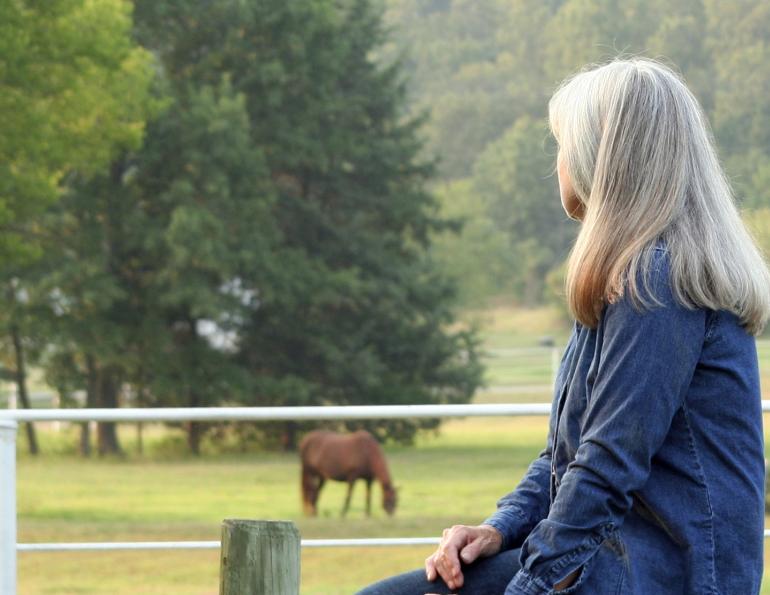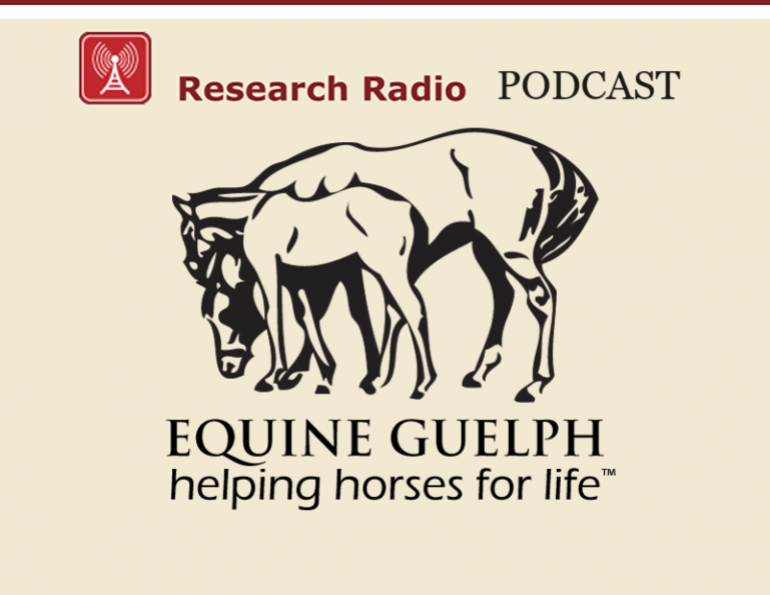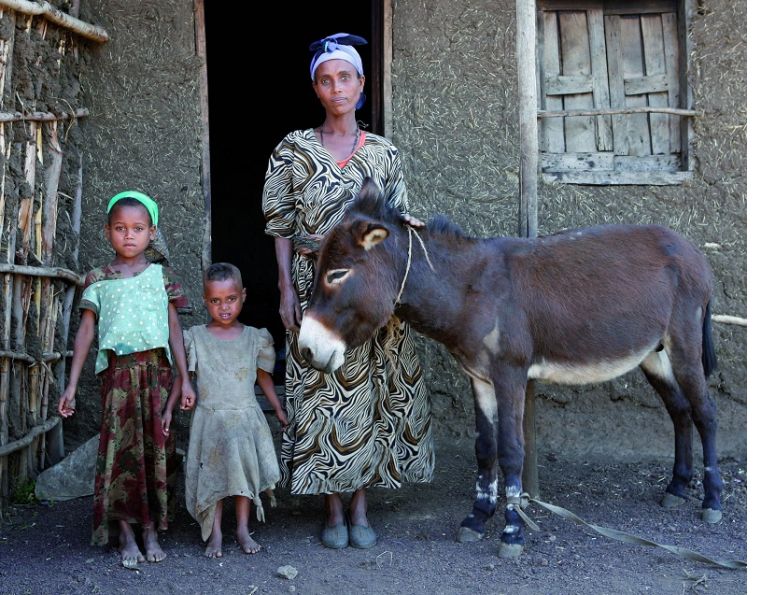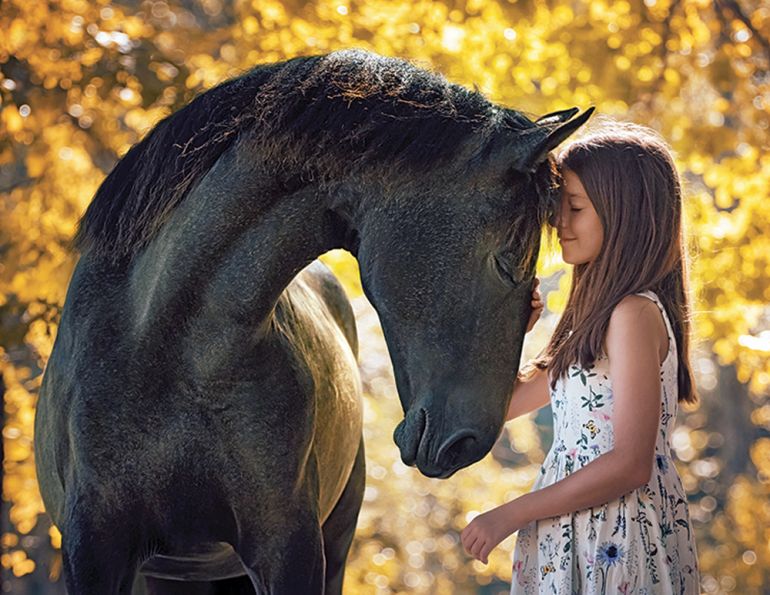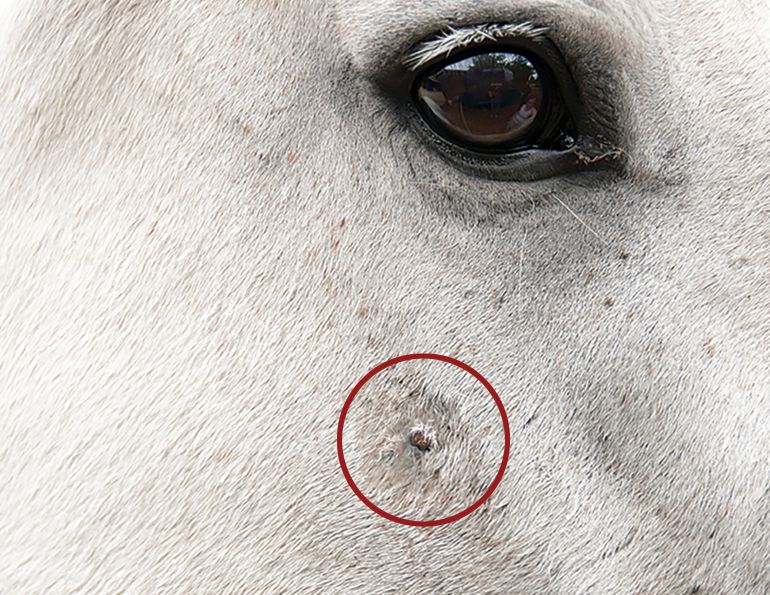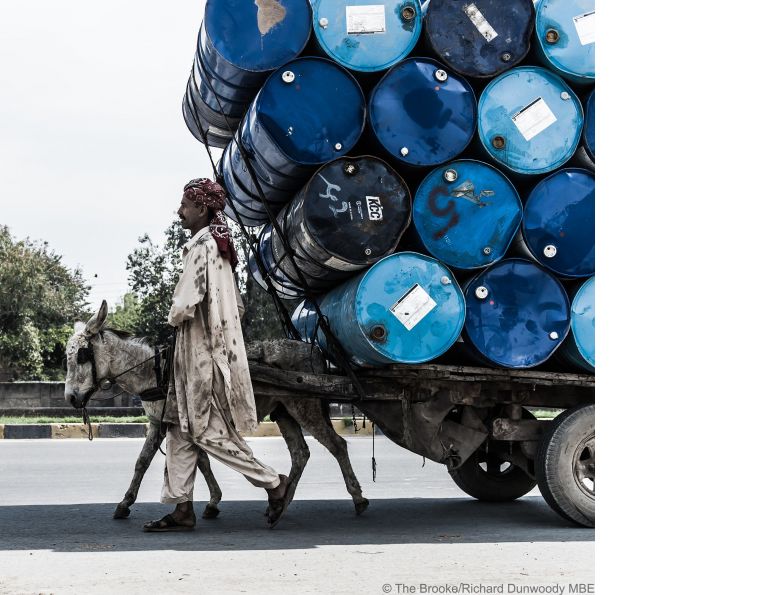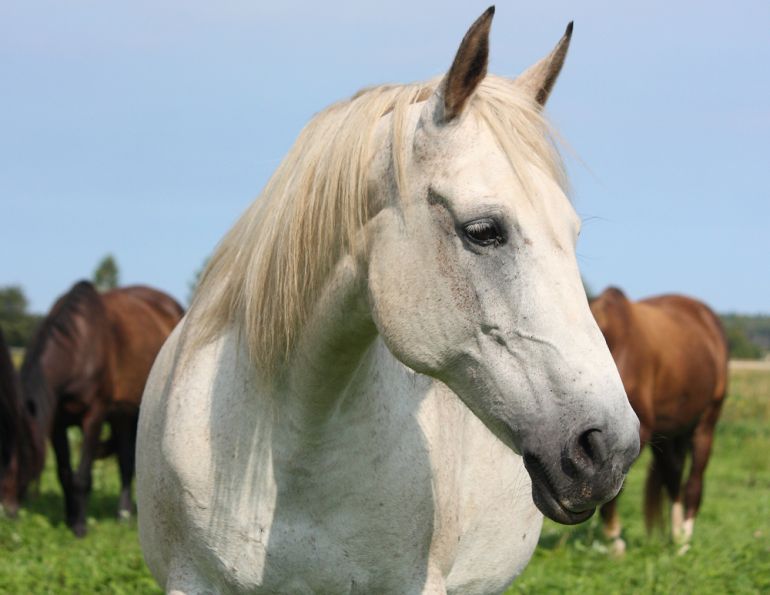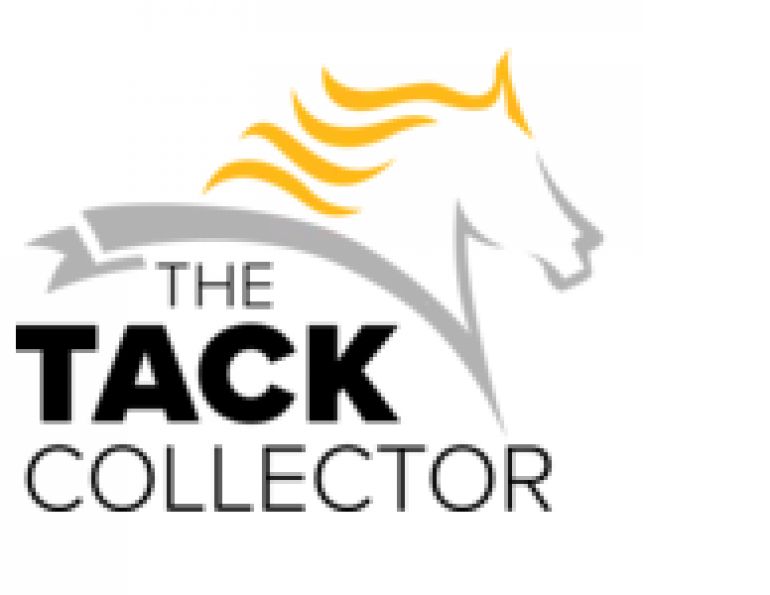By Margaret Evans
She stood quietly, gazing beyond her band to the line of trees. A moving shadow caught her attention as a coyote froze and then pounced on the unsuspecting mouse. Maisie watched the simple cycle of predator and prey, life and death. She shook her head, then moved to a grazing patch. Her characteristic limp, the result of a broken knee during her racing days, defined the awkwardness of her walk.
Since her knee injury as a three-year-old, Maisie had never been ridden but she had proved to be a wonderful broodmare. She had passed on her motherly skills when her daughter Daisy had given birth to a colt, Sham. Having raised six foals in her life, Maisie’s mothering and babysitting instincts were strong and she would happily stand over her grandson as he dozed in the sun while Daisy grazed.
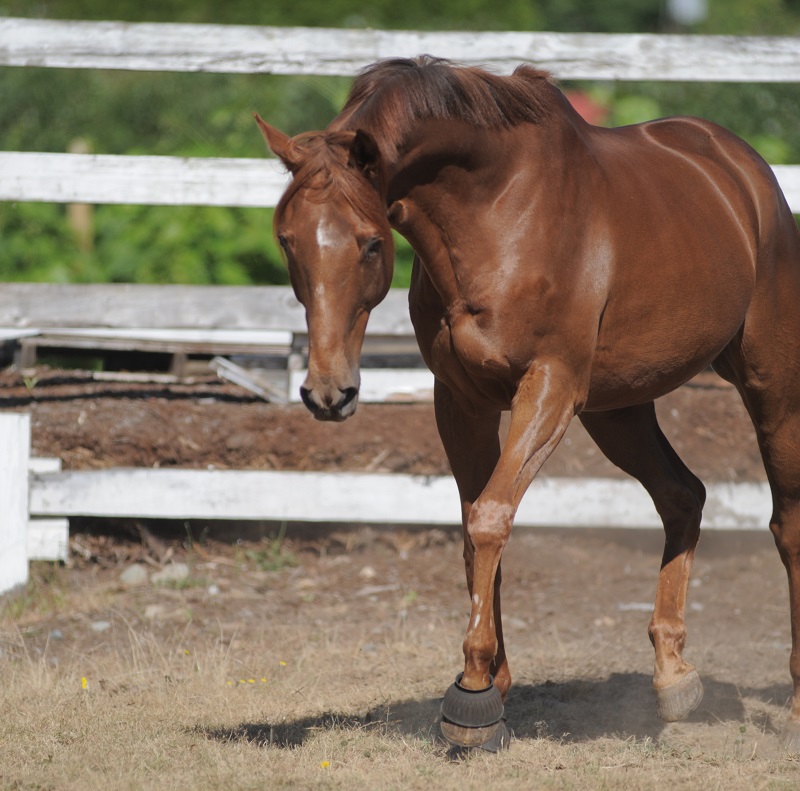
Ownership of a horse is a privilege, and with it comes the responsibility of ensuring the best possible quality of life for these beautiful animals. Photo: Robin Duncan Photography
But now, at 23 years of age, her limp was more pronounced. She had come through a cellulitis infection in her hind leg that had put greater strain on her forelegs, and it was getting harder to put weight on her. It was early winter. Could she cope with the cold, more storms, and ice on the ground? I faced an agonizing decision, one that I had been putting off. Was it time to say goodbye to our dear Maisie?
“One of the hardest decisions of owning a horse is when and how to say goodbye to an old friend,” says Dr. John Twidale, a veterinarian in Langley, BC. “While veterinary medicine has made great advances in the diagnosis and treatment of lameness and colic, we do not have the elixir of youth to cure old age and the chronic conditions that come with it.”
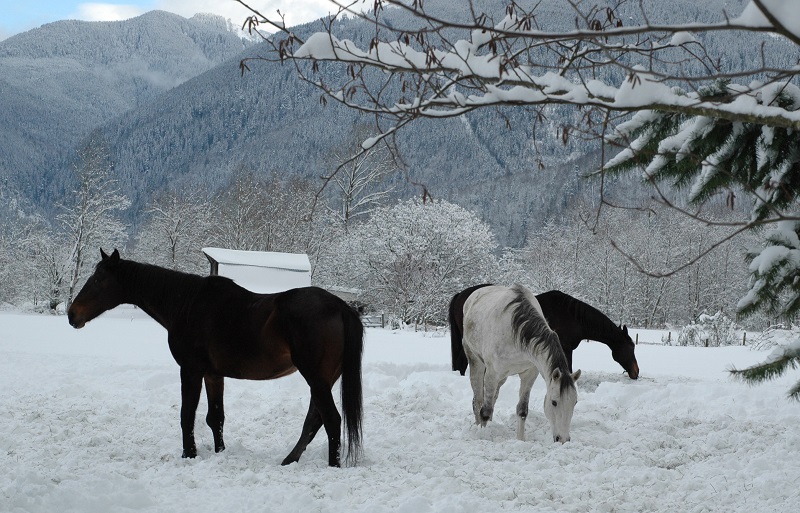
The author’s horse, Maisie (left), stands quietly in the snow on Christmas Day of 2008, the pronounced scar tissue on her right knee clearly visible. Over the years, she developed her own measures of self-protection by moving with caution and an awareness of her limits. Photo: Margaret Evans
Sadly, many older horses and ponies are sold when chronic health problems related to their advanced years prohibit their continued use as riding horses.
“Giving [an older horse] away ‘to a good home’ is really passing off your problem to someone else,” cautions Twidale. “Some well-schooled older horses do find a second home as school teacher to a novice rider in dressage, barrel/poles, Pony Club, therapeutic riding. But many do not.”
Dedicated owners who loyally refuse to part with their senior equines should be prepared to face, at some point, one or more of the chronic conditions that commonly affect older horses. These include arthritis and other chronic lamenesses; metabolic disorders such as equine metabolic syndrome, insulin resistance, and Cushing’s disease; laminitis and/or founder; and certain respiratory diseases, including recurrent airway obstruction (also known as heaves).
Many of these health issues are exacerbated by the changing seasonal conditions that occur within the final few months of each calendar year. Winter, with its cold, rain, wind, and snow, is an especially stressful time for older horses. Awareness of this fact is likely responsible for the increased number of requests for euthanasia Twidale reports receiving during the fall and early winter.
If, as winter approaches, issues concerning the health of the senior horse become more acute, it may also become apparent that the time for a frank and honest discussion with a veterinarian has come. But when caring for an older horse with chronic health problems, it is in the horse’s best interest that you remain mindful of the factors that affect his quality of life year-round.
Routine veterinary care for the older horse consists of regular vaccinations, teeth floating, and deworming, and careful attention to any special dietary requirements. There may also be a need for palliative care. But as the horse gets older and chronic health conditions become harder to manage, eventually questions will surface that demand practical and humane answers.
Will he ever be rideable again? Can his condition be cured, or is treatment only a palliative care designed to keep him comfortable? How much discomfort is he currently experiencing? Will his condition get worse, especially going into winter? How much worse? Will the treatment continue to adequately manage the symptoms that cause him the most discomfort? How long can you afford this treatment on top of the regular expenses of owning a horse (e.g. board, feed, routine veterinary and farrier care, etc.)?
Your veterinarian can and should be able to help you answer many of these questions.
“Chronic incurable diseases should begin a discussion between the owner and veterinarian as to what is best for the future of the horse,” says Twidale. “Age is certainly one factor, but usually there are other factors which advance the decision to consider euthanasia. Sometimes the decision is easy, (such as) a broken leg, lacerated tendon, or severe colic with ruptured bowel which calls for immediate euthanasia on humane grounds.”
But in cases where the implications of a health issue are less clear-cut, facing the dilemma of whether to euthanize a beloved horse can be agonizing. Elaine Little, a former customer service advisor at Canadian Horse Journal, recently found herself in the midst of this very dilemma.
She purchased her thoroughbred gelding, Kydan, for use as a hunter when he was five years old. He developed into a talented, intelligent, and challenging horse with a distinctive personality that required patient understanding and a certain way of handling. Now 18, Kydan still needs and wants to work; he grows bored easily when he’s not ridden and entertains himself with rambunctious play in the paddock that sometimes yields self-inflicted injuries. But his ability to be ridden is complicated by a hoof condition.
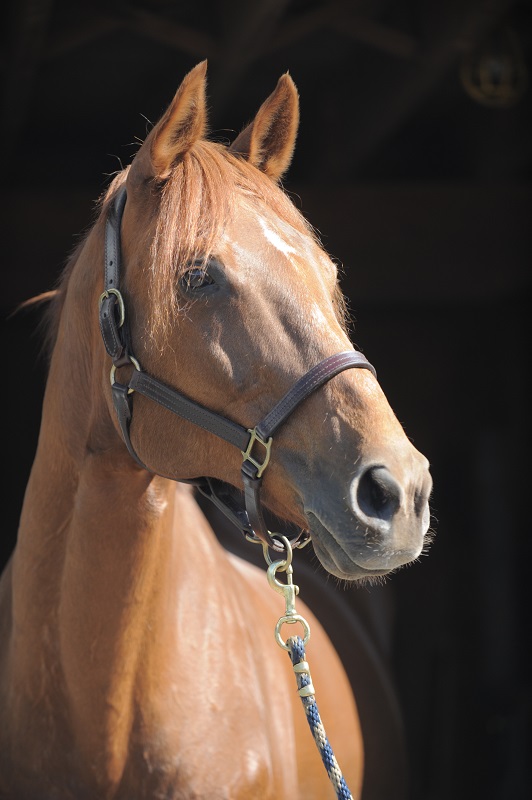
Kydan. Photo: Robin Duncan Photography

“I’ve loved this horse more than I can express,” says Elaine Little about Kydan, the 18-year-old gelding who has been her companion for the past 13 years. “Warts and all, he’s mine. I want what is best for him.” Photo: Robin Duncan Photography
“Two years ago, Kydan got his first abscess in the front right foot,” said Little. “No big deal, I thought, lots of horses get abscesses at some point. But it was a very big deal. The farrier showed me the cause of the abscess. It was not environmentally caused. It was conformation. Both front feet are flat but that foot is the worst. Over the years it has become flatter despite the continuous efforts of a very good farrier. Fibres inside the sole were tearing, causing a pocket. The pocket got infected and there was his first abscess. Fibres continued to tear. Bruising and blood at the white line were showing up on his sole every time he was being shod. Each shoeing we hoped for a better outcome but were disappointed to find no change or that the sole was worse.”
In addition, two veterinarians found that Kydan was suffering from a rapidly progressing case of arthritis of the navicular bone.
“Neither supplements nor cortisone helped,” says Little. “Kydan was on bute (phenylbutazone) for over a year, daily. He is now on Previcox daily. He has arthritis in his hocks also.”
Unfortunately, when it comes to managing Kydan’s growing level of discomfort, Little is out of viable options.
There comes a time when, if there is no hope of improving the older horse’s quality of life, professional advice must include the option of euthanasia. The absoluteness of the word spoken aloud is always a shock, a truth Little can attest to.
“When I have trauma in my life I survive by boxing it up, sealing the lid, putting it on the shelf, and trying not to have to deal with it,” she says candidly. “My coach asked, ‘What options have you considered for Kydan?’ She was the first to actually put into words what others were likely thinking. Her question started my reality check. I had to get the box off the shelf, deal with the contents, and start the process of finding out what options best suit Kydan.”
To cope with the prospect of euthanizing a beloved horse, an owner should spend time preplanning with their vet so they understand what to expect and have a plan for the animal’s disposal. Knowing how the day will progress and having a structure for closure can help them to deal with the stress.
“I have been there for rider friends when they have had to put their horses down,” says Little. “Thank goodness for people who understand how much courage it takes, how much grief is suffered, and how much support and understanding we need to make this horrible decision.”
The one blessing of euthanasia is that it is quick and it is painless.
“Anesthesia occurs within a minute of the intravenous lethal dose and the horse falls unconscious,” Twidale explains. However, owners should be prepared for the fact that it takes several minutes before the horse can be declared dead and its body removed.
“During this time there may be involuntary muscle tremors, paddling movements, and irregular breathing as the horse passes from deep unconsciousness to death,” says Twidale. “I like to cover the horse with a blanket or tarpaulin until it can be removed.”
For most horse owners, backyard burial is not an option because of environmental regulations. Occasionally, and on the recommendation of my vet, I have sent my animals to the BC Animal Health Laboratory for autopsy in an attempt to gain clarification when the health complications that led to their death have been unclear. Horses and other animals that are sent to the lab for autopsy are disposed of through cremation. No ashes are returned. But the value of the autopsy report is in the confirmation of the condition that precipitated the need for euthanasia, bringing with it the peace of mind and closure that the decision was the right one.
The torment of struggling to decide when to make that final commitment is something many understand. The cloud hangs like a heavy veil and there seems to be nowhere to turn but to face the crushing emotions of the inevitable.
“Kydan turned 18 in June,” says Little. “I’ve loved this horse more than I can express. Warts and all, he’s mine. He’s wonderful, handsome, loving, clever, challenging, rewarding and the best communication teacher I’ve ever had. I’ve had to listen with my body and my mind to learn how to speak to him very respectfully with every aid, natural or otherwise, in order to gain his trust and cooperation. He has been worth every bit of the challenge; he has given me life skills, riding skills, and horsemanship skills, and he’s a very dear animal friend.”
And it’s the final act of that friendship that will help Little in the time ahead. Understandably, euthanizing her horse is repugnant to her. But, she says, “I have the power to stop him from suffering in the wrong hands. I have the power to stop him from the daily pain he is suffering now. I have the power to stop the future pain that he would suffer as his condition progresses.”
It’s that power embraced in the purest of love and compassion that will sustain Little as she helps Kydan move forward to another place.
“I want what is best for him. Suffering daily pain, not being able to work, rough-house play possibly causing a break inside his disintegrating bones are not in his best interest. Giving him away is not an option. Retiring him to a field is not an option. Healing him is not an option. What other option is there?”
With the passing of each of our horses and ponies, I remember how I agonized and clung to the belief that freeing them of pain and disability was the most compassionate thing I could do.
“Euthanasia is the last and kindest thing you can do for your old friend,” says Twidale. “Personally, I have had to put down three of my own horses over the last 30 years and I have no doubt that I made the best decision for the horses. Dolly (chronic founder), Impi (broken leg), and Sylvester (chronic navicular) were all great rides and I have good memories from all of them. We planted a tree in the garden for each of them and shed a tear as we watered it, then moved on with no regrets. So should it be for you all.”
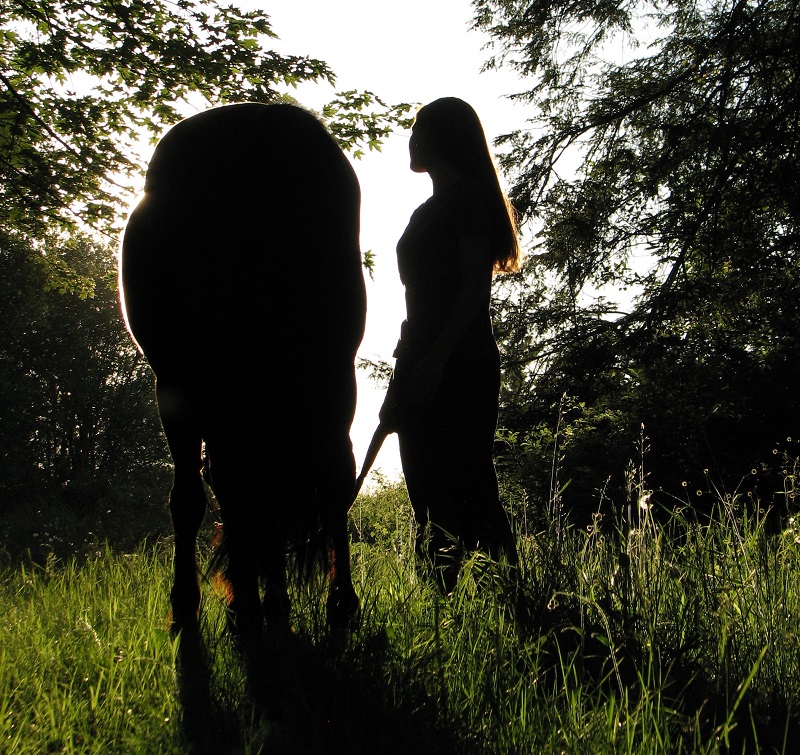
Ultimately, when it frees him from suffering pain or other discomfort caused by a chronic health condition, the decision to euthanize a beloved horse is the greatest act of love and compassion an owner can express.
The silence was profound. Maisie was sedated as the final needle slid in. I rested her head in my lap and placed my hand over her eye. Seconds passed. The restlessness eased. Moving his stethoscope into position, my vet listened. He nodded.
Maisie was gone.
I turned away. Tears welled. Time hung in a space bridging a wondrous divide. A breath feathered across my shoulder. Maisie’s spirit soared in a caress of goodbye.
Farewell dearest friend. Love you forever.
Main photo: kkgivens/istockphoto.com



